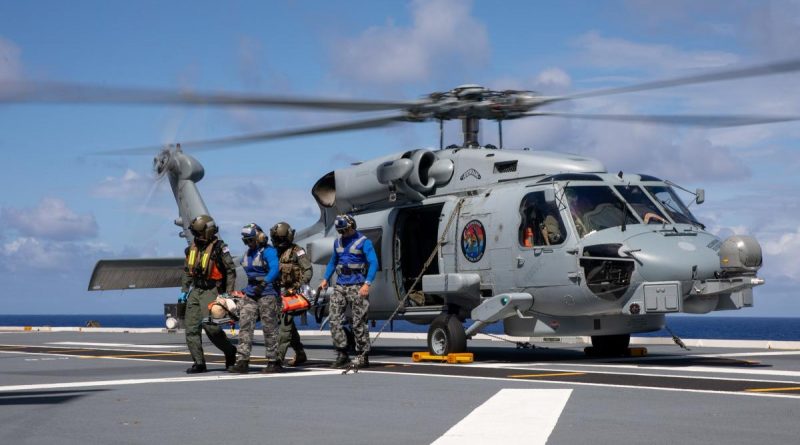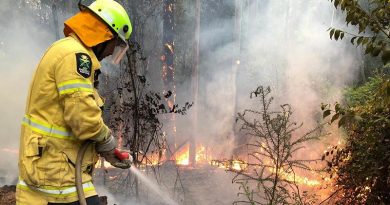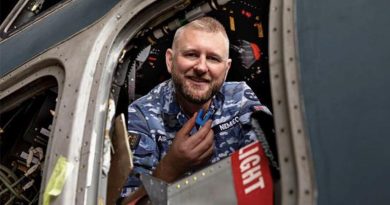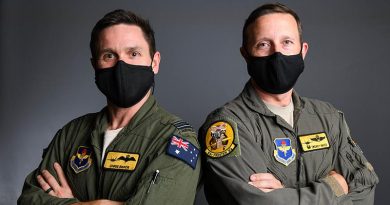Medical ’emergency’ tests skills

At the request of the government of Nauru, the Australian Defence Force (ADF) deployed a team of specialist personnel to support the disposal of explosive remnants of war.
CAPTION: Royal Australian Navy medical officers Commander Robert Turner and Lieutenant Cody Nash transfer a simulated casualty from a MH-60R Seahawk during a training exercise on board HMAS Canberra. Story by Lieutenant Nancy Cotton. Photo by Petty Officer Christopher Szumlanski.
Operation Render Safe, the ADF’s commitment to the South-West Pacific region, was conducted between July 24 and August 24.
While specialist units on Nauru continue to ensure the safety of the local population, HMAS Canberra deployed ready with their Role 2 Enhanced hospital capability on waters just off the island.
Commander Scott Squires, the Maritime Operational Health Unit’s (MOHU) Director of Clinical Services on board Canberra, had a team of 34 specialists supporting the multifaceted medical capability for the operation.
As Canberra sailed towards Nauru, Commander Squires said the unit was performing their work-ups ready to support Operation Render Safe.
“It’s been very successful,” Commander Squires said, “we performed a number of smaller departmental training exercises then we bought it all together for the full scenario where we were able to run it as a real-time medical incident.
“For the exercise, we had a simulated casualty with a blast injury from explosive ordnance who was treated and evacuated from Nauru and the medical team on Canberra then continued with the management.”
Lieutenant Cody Nash, a retrieval nurse for MOHU, had the job of retrieving the casualty via Navy’s MH-60R Seahawk helicopter from the island, delivering healthcare and stabilising them for transportation and higher care back on board Canberra.
“The exercise was very well done, there is so much value in continuous training and working through the scenario like we did with the full team,” Lieutenant Nash said.
In the medical scenario, the casualty had suffered a severe multi-trauma injury with head and chest injuries, a collapsed lung, ruptured spleen, liver laceration, pelvic fractures and a lower leg amputation.
Commander Squires said for the purposes of the exercise, testing the processes and requirements for a scenario like this on board were really important.
“For the scenario, it meant that – unfortunately – the casualty did not recover in the Intensive Care Unit on board. But this triggers further processes to be worked through, from mortuary affairs and utilising personnel such as the Chaplain on board, to ensuring the rigorous processes and people on board and ashore are notified within the required timeframes,” Commander Squires said.
“Running through the scenario as we did, enabled everyone to understand and train for this unfortunate outcome. Hopefully we never have to do it, but training to this extent is essential for all involved.
The ADF-led operation has been in force for 20 years, providing support to the South-West Pacific nations to conduct the disposal of explosive remnants of war, remediation of disposal sites and ensure the safety of the local population and promote safety awareness around unexploded ordnance.
.
.

.
.





